This trigger won’t work on Samsung phones, which is something of a pain in the tail as I tend to shoot my bench videos with a Samsung S3 which is dedicated to this task. I of course tested the prototype with two other phones, but not with my filming phone.
First I tested the design – I’m using a 3k resistor to fake a microphone – that way the phone can sense resistance and know there is a headphone plugged in. The phone expects something like 2-5k resistance from an electret microphone, hence the 3k resistor acting as a dummy load.
In this photo I have a 2.5mm four pole plug which is plugged into a 2.5 to 3.5mm adapter on the back of that I have a 3k resistor connecting ground and the microphone pin – the other resistor is a 22o ohm resistor which is only soldered at one end to the mic pin – thus acting as a switch if the other end is pressed to the ground pin. This was the test rig, which worked perfectly on my LG phone.
This is what the circuit looks like. The 3k load is hard wired, the 220 ohm resistor is on a switch. When they are placed in parallel (when the switch closes) the resistance drops from 3000 ohms to about 205 ohms, which signals to the phone that the volume button has been presed – that causes the phone to trigger the camera shutter if the camera app is open, Unless you have a Samsung, in that case it causes the phone to zoom in (a fact which confused the hell out of me at the end of the build).

Selecting some resistors for the circuit – the 332 means 33 and two zero’s – 3300 ohms, which is a good value to fake a microphone capsule with.
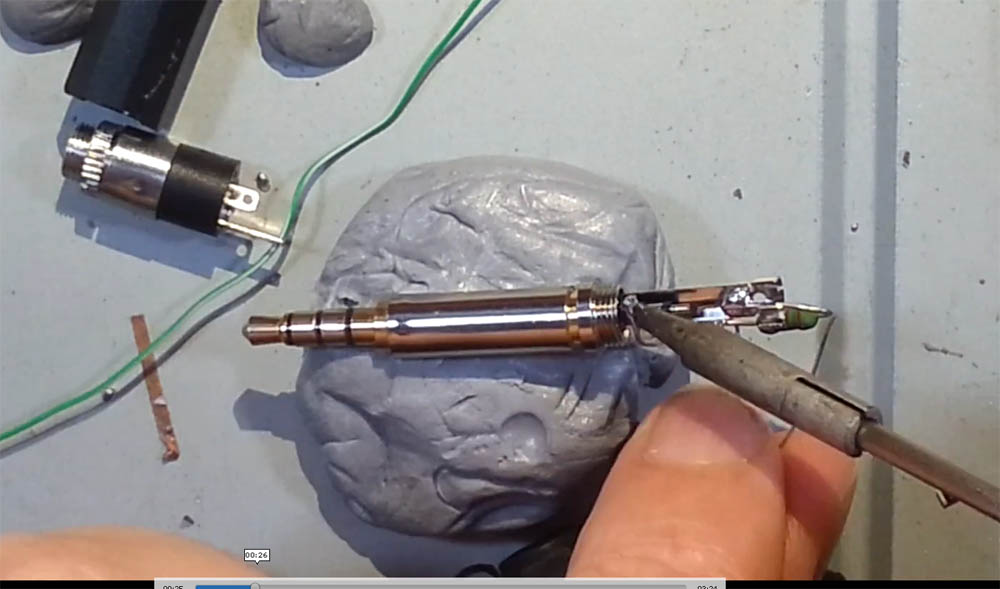
Removing the resistor arrangement I’d tested with.

I was pretty surprised at just how fiddly it was to solder onto the connectors here – admittedly I was using a 2.5mm plug with an adapter, but even so the connector only gave me about 1mm of metal to solder on to.

I’m tinning the small jumper wire I’m breaking out the mic line with.

What I’m doing here is soldering the sleeve pins of the plug and the socket together, the mic pin I’ll join with a wire – there are no other pins connected here (it will all be insulated with hot glue). Besides the stated use here of triggering a camera, the only possible use for this device is to attach a microphone to a cellphone (which is actually a handy use).
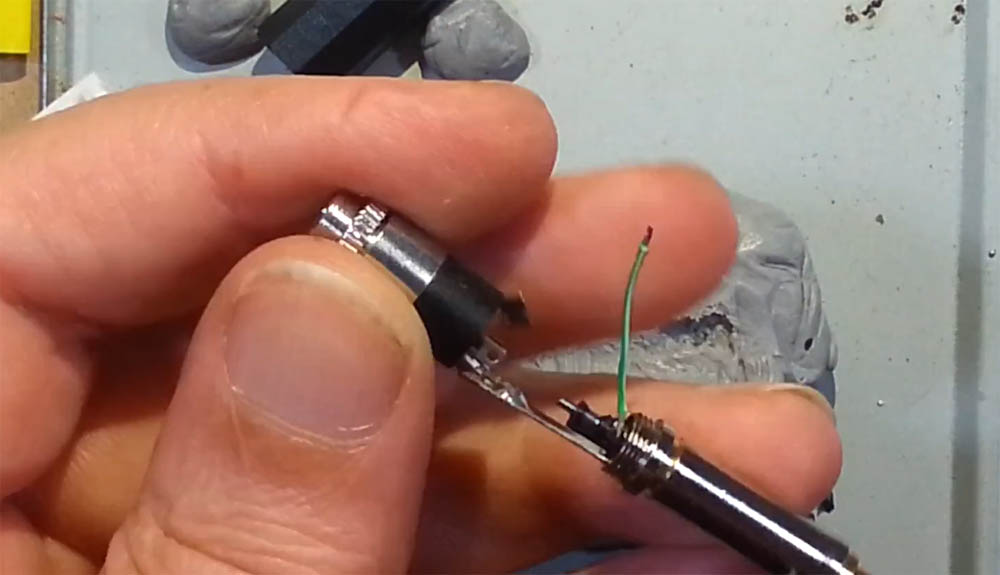
That’s the joining wire for the mic line – I’m connecting it to the tip of a 3.5mm cable – the main reason for this is to keep the pins as far apart as possible. Plus tip and sleeve is kinda traditional for audio wiring.

Here you can see the 2.5mm plug I’m using next to the 3.5mm adapter.
I had a cut open sleeve lying about so I decided to use it here – I’m about to fill it up with hot glue so that nothing can move about. Hot glue is great for making connections more heavy duty.

In this shot I’m levering open the sliced sleeve so that I can liberally gob hot glue all over the insides.
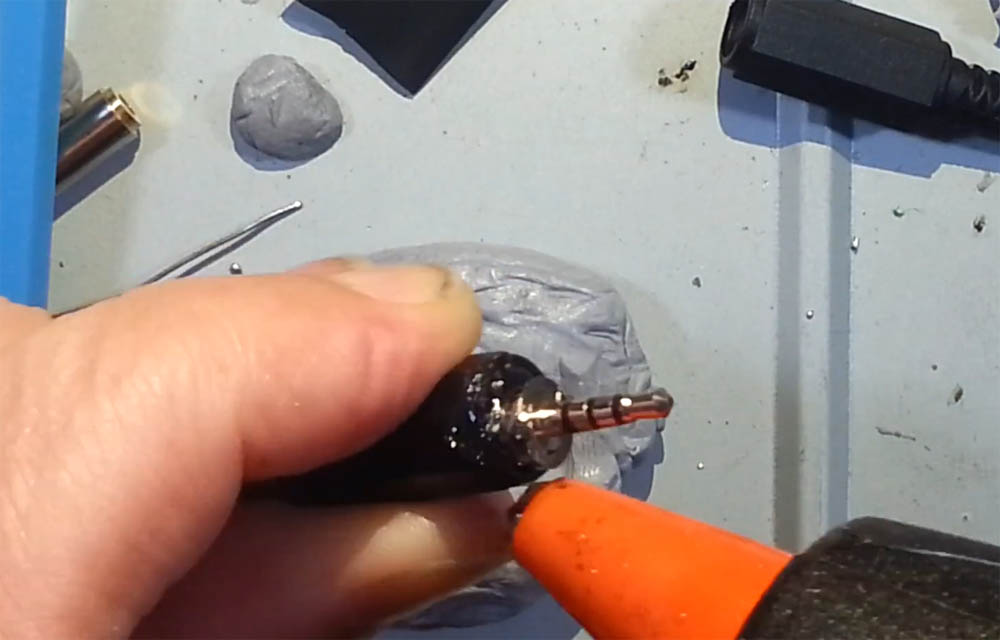
Not being sparing with the hot glue.

Then I put some heat shrink over it all so that it looks tidy.
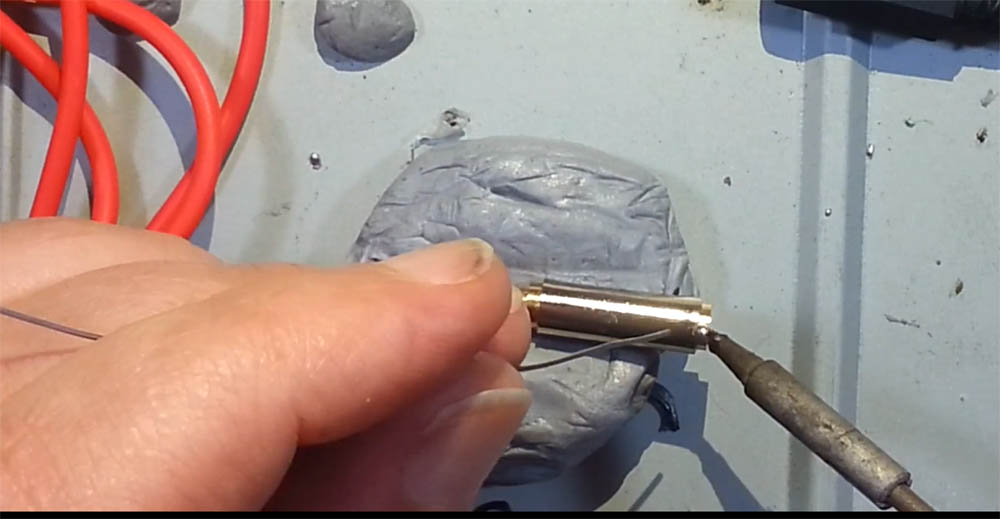
The 2.5 to 3.5mm plug adapter started falling apart at this point so I soldered it back together.
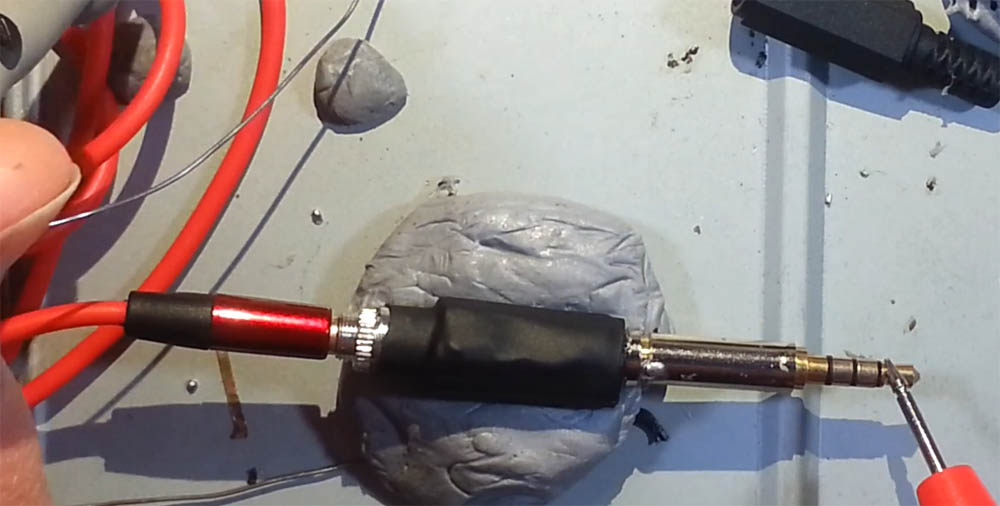
Testing out the continuity, this pin isn’t actually connected, but I tested them all.
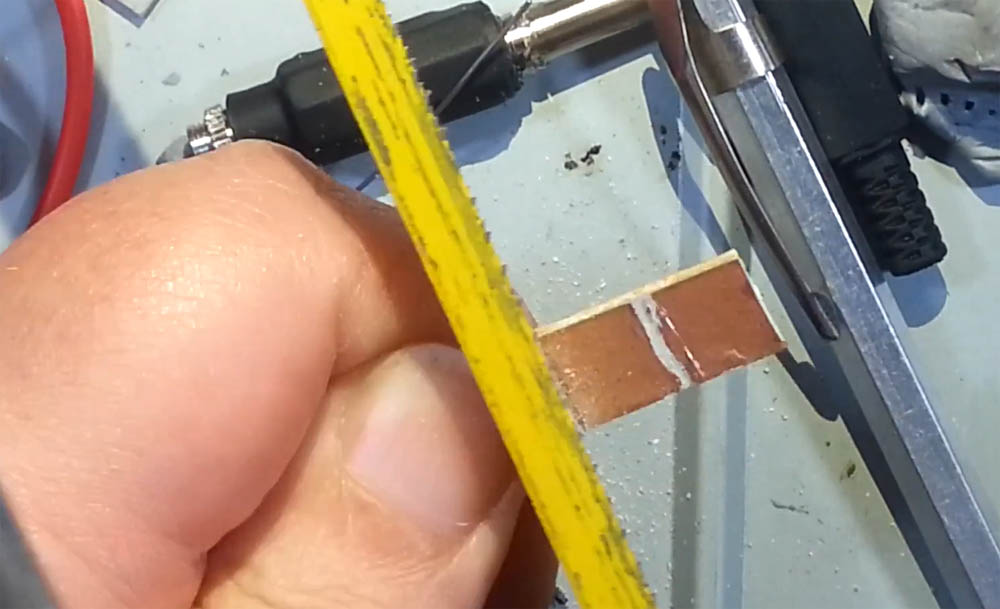
I grabbed an offcut of scrap PCB and used a hacksaw to score away some of the copper so that I had islands to work with.

Soldering on a 3k resistor as a dummy mic load. The socket is connected to ground on the right. These resistors are 1206, large enough for fairly easy hand soldering.

The green line is the mic pin nd the third land is the 220 ohm resistor which will act as the shutter button when the button is wired in.
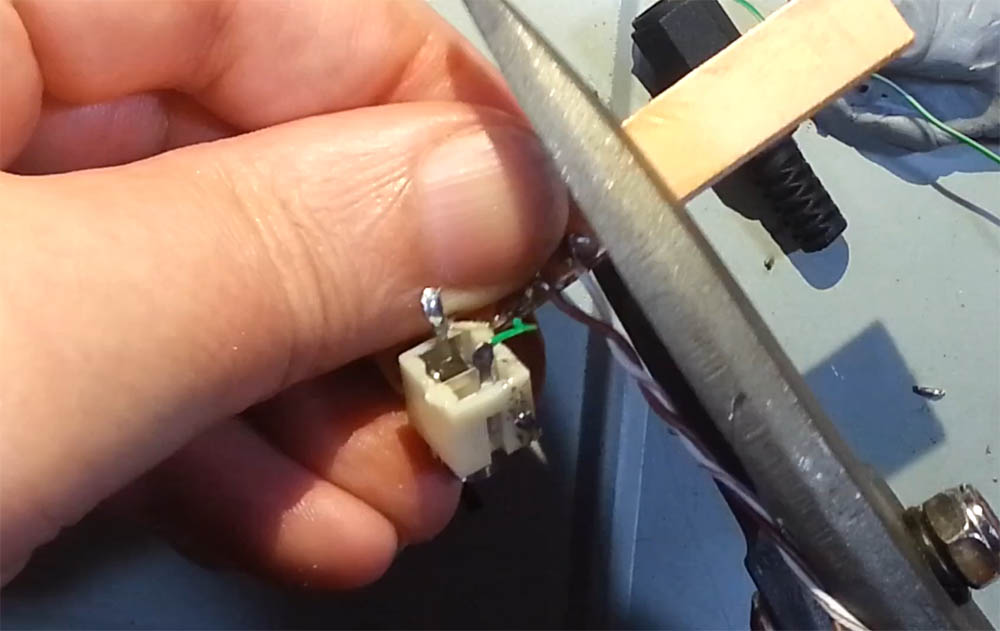
Snipping off the excess PCB for later use.

I grabbed a small project box and drilled holes for the plug & button – I enlarged the holes with a step drill.
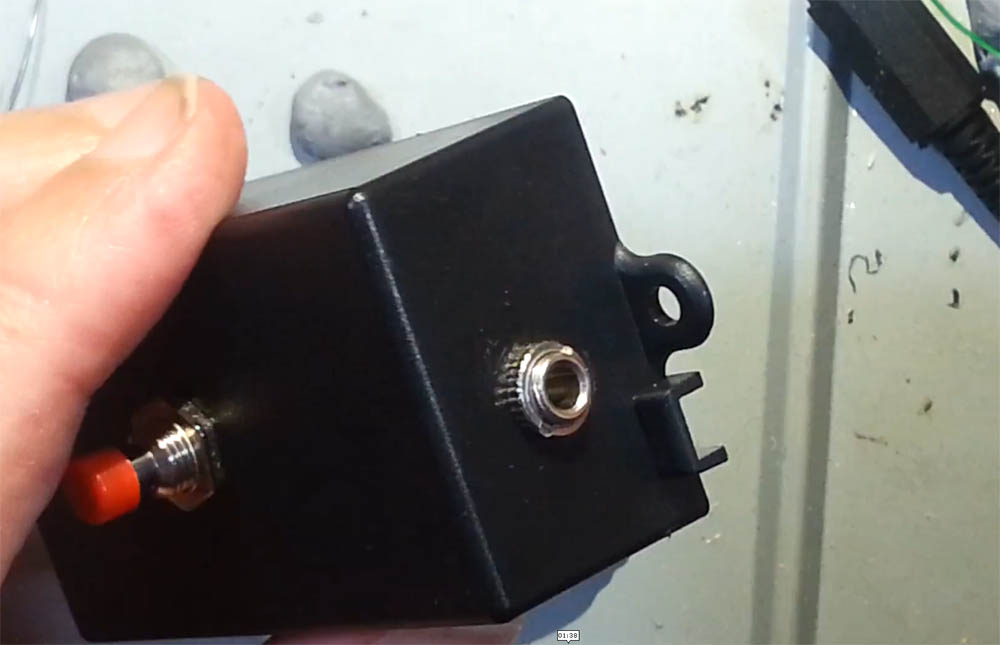
All in place.
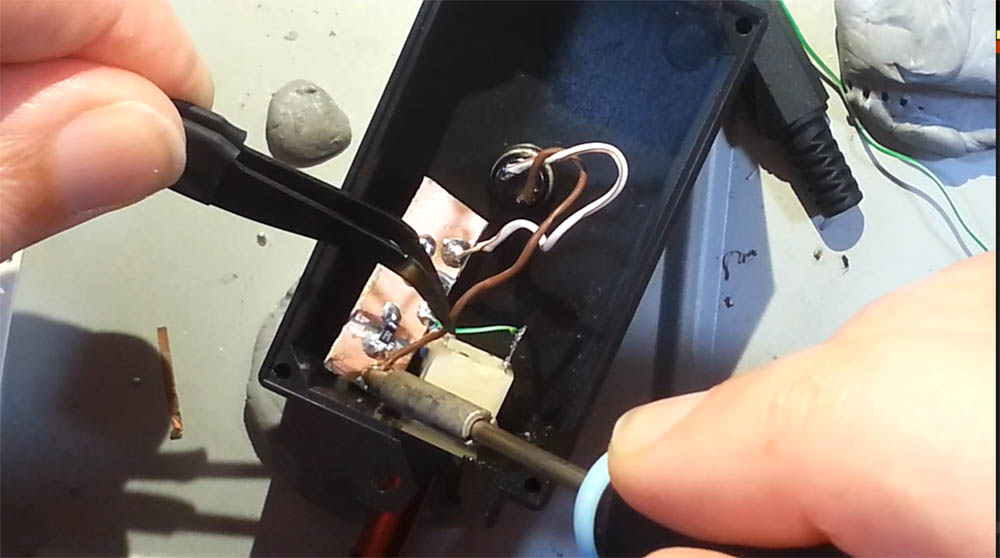
At this point I’d actually made a bad connection (this was mainly because I’d done all of this without doing any testing or checking), so I moved it to where it should have been.
It was at this point that I hit a stumbling block and discovered that it doesn’t work for my main filming camera which is a samsung S3. It’s still a useful thing to have, so I didn’t waste my time, but I’ll need to probably switch to a bluetooth camera trigger for my samsung.
What would I do different? Well, actually testing on the device i use for filming would have been smarter than not.
It’s still a useful thing to have I guess, and having a microphone in port is handy – the resistor circuit is in the bitton enclosure, so it will work fine as a microphone input.



